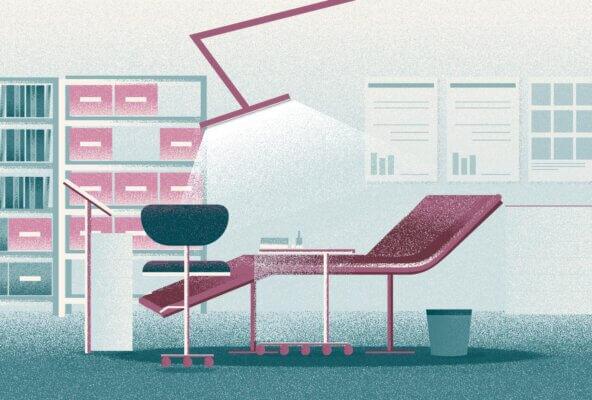Overview
- The CAHPS survey gauges patients’ experiences with healthcare services, and has various versions tailored to different settings and populations.
- The CAHPS survey program aims to assess patient experience, promote patient-centered care, identify areas for quality improvement, and support transparency in healthcare delivery.
- Participation can benefit practices by aligning with value-based payment programs that reward quality and patient experience, while also boosting marketing, practice growth, and patient satisfaction.
If you’ve heard about the Consumer Assessment of Healthcare Providers and Systems (CAHPS) survey but never known what it is or how it relates to your practice, this is the resource for you. Find everything you need to know about this important instrument for evaluating the patient experience and learn how to administer it at your private medical practice.
What is the CAHPS survey?
The CAHPS survey is a family of surveys and research tools designed by the Agency for Healthcare Research and Quality (AHRQ) to measure patients’ experiences with healthcare services. These surveys collect information from patients about their interactions with healthcare providers, hospitals, and even with their health plans. They assess the quality of care and healthcare services delivery from the patient's perspective.
Healthcare organizations, hospital systems, private clinicians, insurers, and policymakers all use CAHPS tools to gather feedback and improve the quality of healthcare delivery. There are different CAHPS surveys tailored to various healthcare settings and populations:
- CAHPS Clinician & Group Surveys assess patients’ experiences with individual healthcare providers or medical groups.
- CAHPS Hospital Surveys evaluate patients’ experiences with inpatient and outpatient care in hospitals.
- CAHPS Health Plan Surveys measure members’ experiences with health insurance plans.
- CAHPS Home- and Community-Based Services (HCBS) Surveys gather feedback from individuals receiving long-term services and support in their homes and communities.
- CAHPS Nursing Home Surveys assess residents’ experiences in nursing homes and other long-term care facilities.
All versions of the survey typically ask about various aspects of healthcare, such as communication with healthcare providers, access to care, timeliness of appointments, and the patient’s overall satisfaction with the care they received.
As a healthcare professional in private practice, you’re most likely to use a version of a CAHPS Clinician & Group Survey.
What are the goals of the CAHPS survey?
Several overarching goals aimed at improving the healthcare system and the patient experience drive the CAHPS survey program. These goals include:
Assessing patient experience
One of the primary goals of CAHPS surveys is to assess and measure patients’ experiences with healthcare providers, facilities, and health plans. These surveys gather feedback from patients to understand their perspectives on the care and services they receive.
Promoting patient-centered care
CAHPS surveys emphasize the importance of patient-centered care, where healthcare decisions and practices are tailored to meet the needs and preferences of individual patients. By collecting patient feedback, the surveys help promote care that is responsive to patients’ concerns and priorities.
Patient-centered care is important because patient experience correlates to better patient disease management and prevention. Furthermore, effective patient communication from physicians leads to better patient compliance, including adherence to medical advice and treatment plans.
Identifying areas for improvement
CAHPS surveys provide valuable data that healthcare organizations can use to identify areas where they can improve the quality of care and services. This data can pinpoint specific aspects of care that may need attention, such as communication, access to care, or care coordination.
Setting benchmarks
The surveys establish benchmarks and standards for measuring the patient experience that healthcare providers and organizations can use to compare their performance to national and regional averages. This helps them gauge their progress over time.
Supporting accountability and transparency
CAHPS survey results are often publicly reported, allowing patients, payers, and policymakers to access information about the quality of care provided by particular healthcare organizations. This transparency supports accountability in healthcare delivery.
Informing policy and decision-making
Data collected through CAHPS surveys can inform healthcare policies and decision-making at the local, state, and national levels. Policymakers use data from CAHPS surveys to set policy, shape healthcare reform efforts, and attempt to improve the overall healthcare system.
Enhancing patient choice
CAHPS surveys empower patients to make informed choices about their healthcare options
by providing information about the patient experience at different healthcare providers and facilities.
Encouraging continuous quality improvement
CAHPS surveys are part of a broader commitment to continuous quality improvement in healthcare. Healthcare organizations use survey data to make changes and improvements in their processes and practices, ultimately leading to better patient care.
So, why should my practice use a CAHPS survey?
In addition to the patient-focused benefits outlined above, there’s another reason your practice could benefit from participation in the CAHPS program. Many payers and government agencies like the Centers for Medicare & Medicaid Services (CMS) have implemented value-based payment programs that reward physician practices and healthcare organizations for achieving specific quality and patient experience goals.
These value-based payment models are designed to shift the healthcare system away from a fee-for-service approach, where providers are paid based on the quantity of services they deliver, to one where reimbursement is tied to the quality and outcomes of care. The CAHPS surveys play a key role in many of these programs.
Here's how these programs work and why they are important:
- Quality metrics: Value-based payment programs often include a set of quality metrics, which may include patient experience measures like those assessed through CAHPS surveys. Physicians and healthcare organizations are incentivized to meet or exceed these metrics to receive financial rewards.
- Financial incentives: Physicians and practices that demonstrate improvements in patient experiences or achieve high scores on CAHPS surveys may receive financial incentives or bonuses. These incentives can be significant and serve as a motivator for providers to prioritize patient satisfaction and quality of care. In 2019, two programs were created under the Medicare Access and CHIP Reauthorization Act (MACRA): a merit-based incentive program system (MIPS) and eligible alternative payment models (APMs). The American Board of Medical Specialties is exploring the requirement for Medical Boards to use patient experience measures and physician professionalism. Health plans such as Blue Cross Blue Shield of Massachusetts and HealthPlus of Michigan are already incorporating patient experience scores into provider pay-for-performance incentives.
- Cost savings: Beyond quality and patient experience metrics, value-based payment programs may also consider cost-effectiveness and efficiency. Providers who deliver high-quality care while managing costs effectively are often rewarded.
- Improved care coordination: Value-based payment models encourage care coordination among different healthcare providers and settings. This can lead to better patient experiences and outcomes, as well as reduced healthcare costs.
- Outcome-based care: Value-based payment programs shift the emphasis from processes and procedures to outcomes and patient experiences. Physicians are encouraged to focus on achieving positive health outcomes and delivering a better overall patient experience.
Value-based payment programs are part of broader efforts to transform healthcare delivery in the United States and promote a more patient-centered, efficient, and cost-effective healthcare system. Using standardized tools, such as CAHPS surveys, to align financial incentives with quality and patient satisfaction ultimately benefits both your practice and the patients you serve.
Positive CAHPS survey results can also bolster your community reputation and help attract new patients, driving practice growth and financial sustainability. They provide great marketing materials and can be used on your practice's website to highlight the quality of care you provide and the level of satisfaction your patients report.
Download your free resource now
Access it instantly — just complete the form

Who is eligible for the CAHPS survey?
Eligibility for CAHPS survey participation varies depending on the specific survey and the healthcare setting under assessment. The eligibility criteria and survey administration procedures also vary depending on the organization or agency conducting the survey.
Healthcare organizations or survey administrators typically use patient records and contact information to identify eligible survey participants. Participants may be randomly selected to ensure the survey is representative. CAHPS surveys are designed to protect patient privacy and confidentiality, and participation is typically voluntary. Patients may have the option to decline participation or opt out.
In the clinic and practice setting, CAHPS Clinician & Group Surveys collect feedback from patients who have received care from specific clinicians, medical groups, or outpatient clinics within a specific timeframe.
What types of questions are on the CAHPS survey?
The CAHPS survey questions are carefully structured to ensure consistency and comparability in the data collected from different patients and healthcare settings. CAHPS surveys assess different aspects of the patient experience in various healthcare settings and may be updated and revised periodically to reflect changes in healthcare practices and patient expectations.
Here are some common categories of questions and sample questions that you might find on CAHPS surveys:
Access to care:
- How often did you get an appointment for care as soon as you needed it?
- Did you have any problems getting the care, tests, or treatment you needed?
Communication with providers:
- Did your doctor or healthcare provider listen carefully to you?
- Did your doctor or healthcare provider explain things in a way that was easy to understand?
Provider or facility rating:
- Using any number from 0 to 10, where 0 is the worst provider/facility possible and 10 is the best provider/facility possible, what number would you use to rate your provider/facility?
Care coordination:
- Did your healthcare providers talk with each other about your care?
- Did you receive help as soon as you wanted it when you needed medical care, tests, or treatment?
Overall satisfaction:
- How would you rate the overall quality of your healthcare?
- Would you recommend this provider/facility to your family and friends?
Please note that these are just examples, and the actual questions on a CAHPS survey can be more specific and tailored to the particular survey version and healthcare setting.
How do I use a CAHPS survey at my private practice?
Currently, the AHRQ offers 3 versions of the Clinician & Group Survey:
Clinician & Group Visit Survey 4.0 (beta) asks about experiences at the most recent visit whether in-person, by phone, or by video.
Clinician & Group Survey 3.1 asks about experiences in the last 6 months; updated to reference in-person, phone, and video visits.
Clinician & Group Survey 3.0 asks about experiences in the last 6 months.
All 3 versions of the survey can be downloaded, along with comprehensive guidelines for using them at your practice.
Some practices work with a vendor to administer the survey and, in some cases, analyze the results. Working with a vendor is not necessarily required, unless dictated by the specific CAHPS instrument, it can be a good idea for the following reasons:
- Neutrality and credibility: An outside vendor can provide an unbiased and neutral perspective when collecting and analyzing survey data. This makes your results more credible, as respondents may perceive an external organization as more impartial than the healthcare provider themselves.
- Quality data: Experienced vendors have the expertise to design, administer, and analyze surveys effectively. They can help ensure that the survey questions are clear and unbiased, which can lead to higher quality data. Vendors are also experienced in managing and monitoring the survey process to maximize response rates.
- Cost efficiency: While it may seem counterintuitive, hiring a professional vendor can often be more cost-effective than conducting the survey in-house. Vendors have the necessary resources and infrastructure to handle large-scale survey administration, reducing the overall cost per survey.
- Compliance with CAHPS protocols: CAHPS surveys have specific protocols and guidelines for survey administration, analysis, and reporting. Experienced vendors are familiar with these protocols and can ensure that your survey complies with them. This is crucial if you plan to compare your results with other healthcare providers using CAHPS data.
- Efficiency and resources: Vendors have the resources, equipment, and trained staff needed to efficiently conduct surveys. This includes facilities for large-scale mailings, telephone systems for phone surveys, and data analysis capabilities. This can save your organization time and resources.
- Expertise in survey administration: Survey administration is a specialized field that requires expertise. Vendors have experience in designing survey instruments, managing survey logistics, and ensuring data accuracy.
- Access to benchmarking: Many CAHPS surveys rely on benchmarking against national or regional data. Vendors often have access to these benchmarks and can help you interpret your results in comparison to industry standards.
- Focus on core activities: By outsourcing survey administration to a vendor, your healthcare organization or practice can focus on core activities such as patient care, quality improvement initiatives, and implementing changes based on survey results.
- Data security and privacy: Professional vendors have robust data security measures in place to protect patient information and maintain confidentiality, ensuring compliance with healthcare data privacy regulations.
If you decide to partner with a vendor to administer CAHPS surveys, the AHRQ offers guidance for selecting the right organization.
Whether you decide to administer it yourself or work with a vendor, a CAHPS survey can be a great tool to help your medical practice improve operations with data-driven decisions, improve healthcare service delivery and outcomes, and boost patient engagement.
Download your free resource now
Access it instantly — just complete the form

You might also be interested in
How to get patients to keep coming back. Learn what influences patient choices and behaviors in the 2023 Patient Perspectives report.







